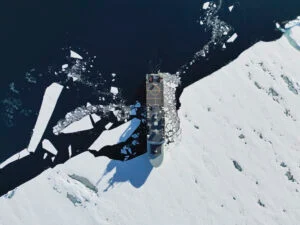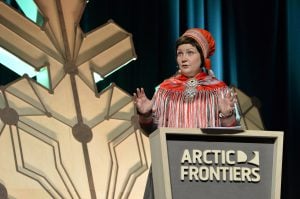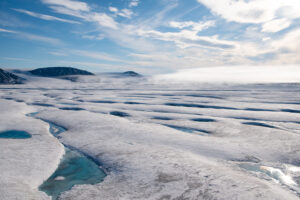
People & Culture
On thin ice: Who “owns” the Arctic?
As the climate heats up, so do talks over land ownership in the Arctic. What does Canadian Arctic Sovereignty look like as the ice melts?
- 4353 words
- 18 minutes
Exploration
Sunniva Sorby spent two winters living in total isolation on the Norwegian Arctic island of Svalbard to raise awareness of the massive impact climate change is having on our polar regions

During the pandemic, it’s safe to say most of us spent some time self-isolating, but not quite in the way our guest today did.
Polar explorer and RCGS Fellow Sunniva Sorby spent over a year and a half, including two long winters, in an uninsulated 1930 trapper’s hut on the Arctic island of Svalbard, which is halfway to the North Pole from northern Norway.
Along with her Norwegian colleague, Hilde Falun Strom, they set a record with their all-women project, called Hearts in the Ice, for their time spent in their isolated outpost while doing scientific research for NASA, the Norwegian Polar Institute and the British Columbia Technical Institute, among others. Their work focused on bringing attention to the massive impact climate change is having on our polar regions.
And now they are about to do another Hearts in the Ice project, this time at Cambridge Bay in Canada’s High Arctic.
Born in Norway and raised in Canada, Sunniva Sorby has spent decades carrying out expeditions in the Arctic and especially the Antarctic. She was part of the first ever all-woman team to reach the South Pole.
Learn more about the Hearts in the Ice project.
Are you passionate about Canadian geography?
You can support Canadian Geographic in 3 ways:

People & Culture
As the climate heats up, so do talks over land ownership in the Arctic. What does Canadian Arctic Sovereignty look like as the ice melts?

Environment
The uncertainty and change that's currently disrupting the region dominated the annual meeting's agenda

Environment
What the collapse of the Milne ice shelf and the loss of a rare Arctic ecosystem might teach us about a changing planet

Science & Tech
A warmer, wetter, and wilder climate is unbalancing the Arctic ecosystem